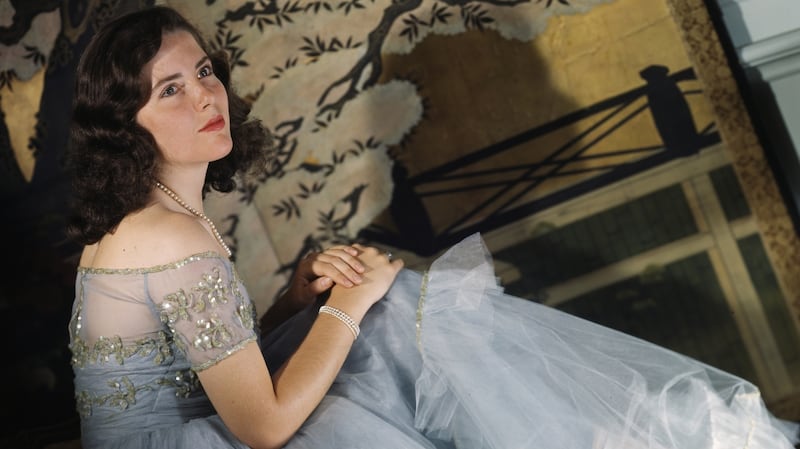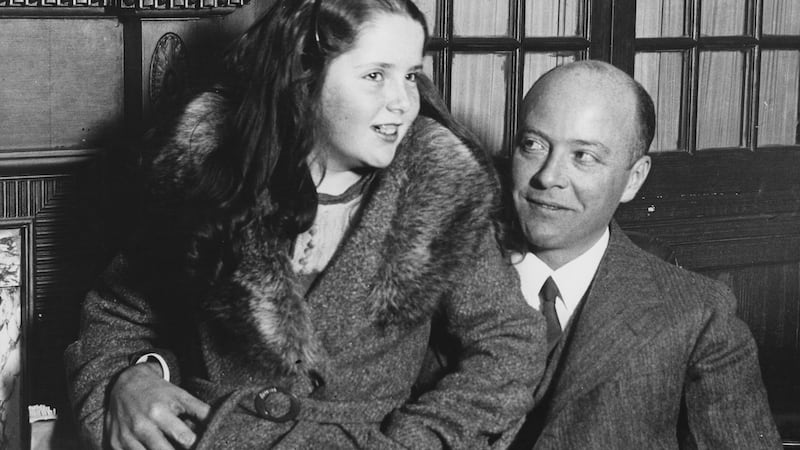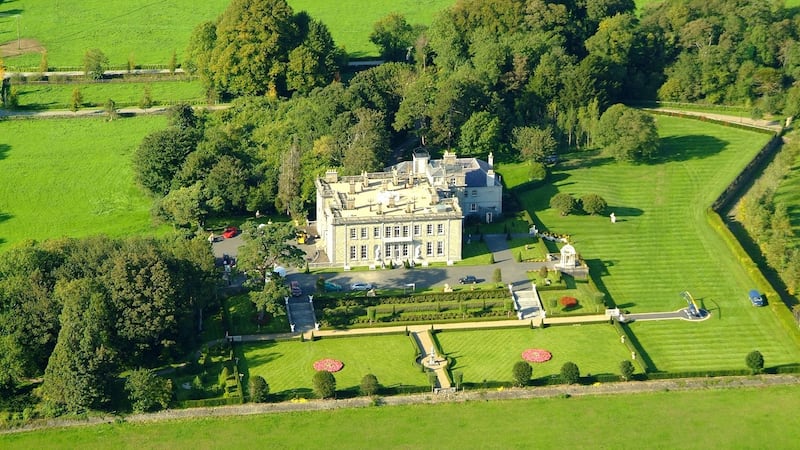A Dublin law firm is offering a reward for information about a pair of missing antique pistols that were owned by the late Anne Bullitt, a wealthy American heiress and racehorse breeder and trainer who lived in Palmerstown House, Johnstown, Co Kildare. She died, aged 83, in 2007.
Last week, Orpen Franks Solicitors placed advertisements in The Irish Times offering a reward for any information about "antique duelling pistols of historic importance to the USA". The solicitors said an unnamed collector was "anxious to establish the present whereabouts of the pistols".
The pistols were, reputedly, given by the first US president, George Washington, to the Marquis de Lafayette after American Independence in 1776. Lafayette was a French aristocrat who had travelled to the US to help with the fight against British rule and became one of the heroes of the American Revolution. As a mark of gratitude, Washington gave him the pistols before he returned to France. If this provenance could be verified, the pistols would be of interest to museums in the US – and to private gun collectors – and could be worth a fortune.
But how did they end up in Co Kildare? Anne Bullitt's father, William C Bullitt was a wealthy diplomat who was America's first ambassador to the Soviet Union and then ambassador to France from 1936 until 1941. A few days before Paris fell to the Nazis, he was, apparently, given a gift of the pistols by a French politician who wanted to acknowledge Mr Bullitt's role as "the greatest foreign friend of France in her darkest hour".
A photograph of Mr Bullitt holding the pistols was published in Life magazine in 1941. According to a 1962 letter written by him, a French politician, named as Charles Baron, claimed Washington had given the pistols to Lafayette and that his wife, a descendant of Lafayette, had inherited the pistols. Mr Bullitt further stated that he had given the pistols to his daughter, Anne, and that "they are now on the mantel over the fireplace in my bedroom at my daughter's stud, 'Palmerstown', County Kildare, Ireland". He died – in France – in 1967.

His daughter Anne had been born in 1924 and spent some of her childhood in Moscow with her father. Like many wealthy American heiresses, she settled in Europe. A woman of great beauty and style, she married and divorced four men – one of them Irish – during a globetrotting life. She was briefly married to Roderic More O'Ferrall, a racehorse trainer in Kildangan, Co Kildare, but the marriage – like her other three – didn't last. She had no children. Through her interest in racing, she met the Irish horsey set and in the 1950s, bought the 700-acre stud farm Palmerstown House in Co Kildare.
She ended up living alone in the house and, in the 1990s, her health began to deteriorate. In 1998 she agreed to sell Palmerstown House to the developer Jim Mansfield for £10 million. Although the sale went through, her advisers were not pleased and, reputedly, questioned her mental health. She was assessed by a psychiatrist and subsequently made a ward of court by the Irish High Court - which meant that her affairs were taken over by court-appointed guardians. She died in the Kylemore Clinic in Killiney, Co Dublin in 2007. Her remains were taken home for burial in her native city of Philadelphia.
Fortune
Before she became ill, she had travelled to New York and met a lawyer, Robert Pennoyer, who she asked to set up a charitable trust in the US to which she bequeathed her fortune. The William C Bullitt Foundation – named in memory of her father – has already received in excess of $20 million, including the proceeds of the sale of Palmerstown House and its contents.
The foundation principally supports organisations that “promote government integrity and protect civil liberties and human rights; help economically and socially disadvantaged children and families achieve the tools necessary to lead independent and productive lives; and protect the natural environment”. Most of the projects it funds are in New York and in the state of Connecticut.
Since Anne’s death, her estate has also been selling her jewellery, art and antiques and her famous collection of haute couture dresses – at auctions in London and Dublin. Hundreds of items have already been sold including dresses by Balenciaga, Lanvin, Jacques Fath, Yves Saint Laurent and Ireland’s Sybil Connolly, as well as handbags by Hermès. Christie’s in London commented that Ms Bullitt had “epitomised the perfect 1950s hourglass figure, which was set off by a tiny waist of just 20 inches”.
Among other notable items were her stunning 1950s Cartier diamond necklace that sold for more than £600,000 at Bonhams in London and a 1920s sculpture by the American artist John Bradley Storrs, that sold at Adam’s in Dublin for €80,000. But there’s no sign of the pistols.

Inventory
In 2009, two years after her death, her executor, Mr Pennoyer initiated proceedings in the High Court in Dublin against Mr Mansfield. Mr Pennoyer was seeking an order directing Mr Mansfield's company to make a full inventory of the contents of Palmerstown House which allegedly included the two pistols and other items, including artwork by Picasso. But the matter was not aired in full as the judge, Ms Justice Mary Laffoy adjourned proceedings to facilitate talks between both parties.
A few days later the matter was settled privately and the proceedings were struck out. It is understood that Mr Mansfield claimed to have no knowledge of the whereabouts of the pistols. Mr Mansfield’s business empire collapsed after the Irish banking crisis and, in 2011, his properties – including Palmerstown House were taken over by the National Asset Management Agency (Nama). He died in 2014 and Palmerstown House has since been sold again.
Ms Bullitt’s representatives believe that the pistols were taken from Palmerstown House and that someone knows their current whereabouts – hence the advertisements and the offer of a reward. If they were, indeed, taken, it is possible that the person who took them did not know – and may still not know – about their historical importance or potential value. It is also possible that Ms Bullitt might not have even been aware they were missing.

Mr Pennoyer has said that if the pistols turn up he would like them to go on display in Mount Vernon – George Washington’s farmhouse in Virginia, a major US historic landmark and visitor attraction.
Provenance
How much might the pistols be worth? Who knows. But another set of pistols with a Washington/Lafayette connection sold at Christie’s in 2002 for $2 million (€1.6m) and were acquired for a museum in the US. They were catalogued as “saddle pistols” that had been “presented by the Marquis de Lafayette to George Washington during the American Revolution”. These pistols had been returned to the Lafayette family in France in the mid-19th century and Christie’s tracked their provenance though different owners.
Could there be more than one pair of pistols with such a connection? It sounds unlikely and too good to be true – but it is possible. In the world of antiques and collecting almost no object is as rare or unique as is often claimed. There are other pistols known to exist with a Washington/Lafayette connection. Military men at the time exchanged guns as gifts and Lafayette may well have brought various guns back to France as souvenirs from his adventures in the US.
But even if the Bullitt pistols are found, there’s a long road ahead to get them properly assessed and valued.
For now, the only known concrete visual evidence about the existence of the pistols is the 1941 photograph of Mr Bullitt holding one in each hand. Will this – and the offer of a reward – be enough to trigger someone’s memory? The solicitors on Burlington Road, Dublin 4 and Ms Bullitt’s representatives in New York are waiting to hear.













